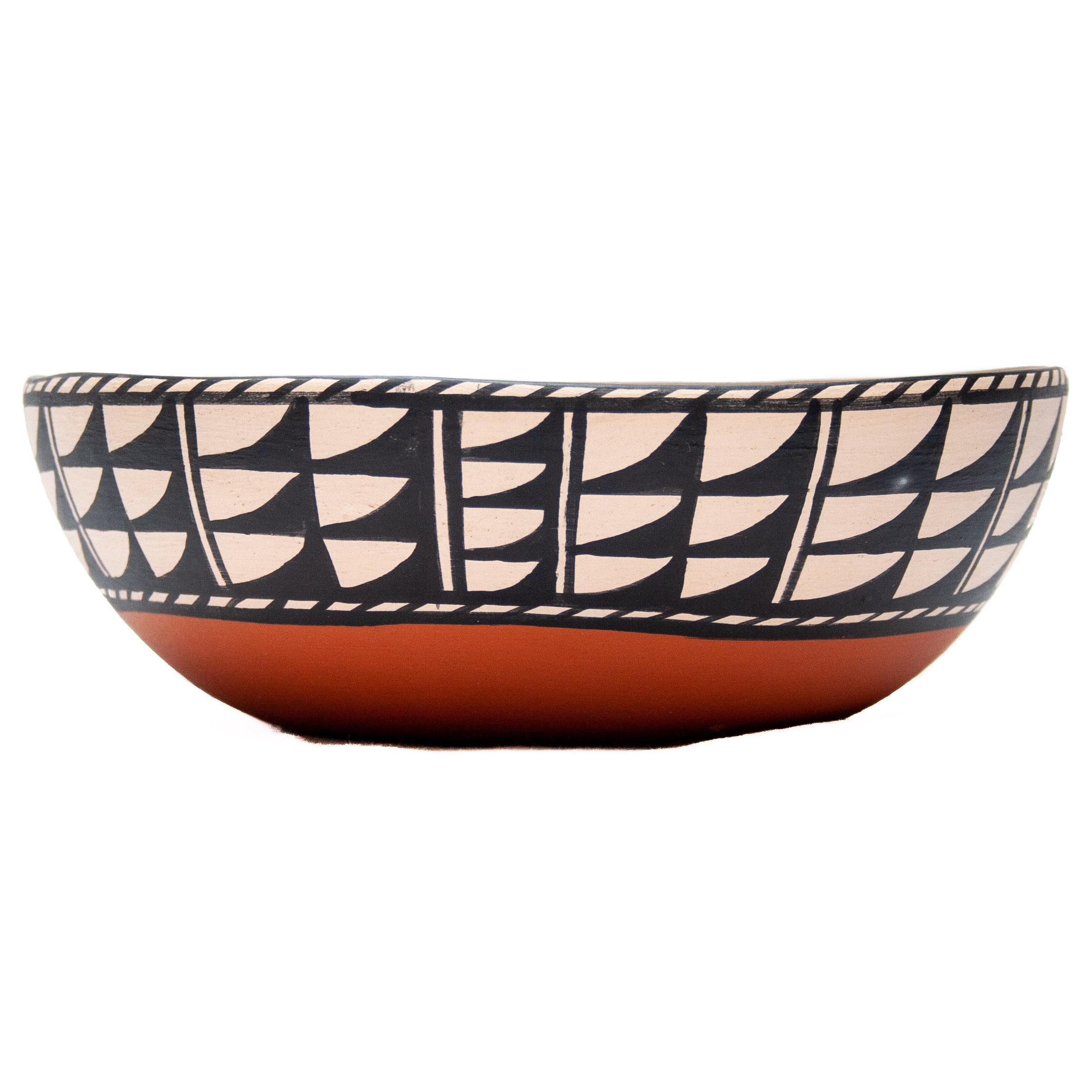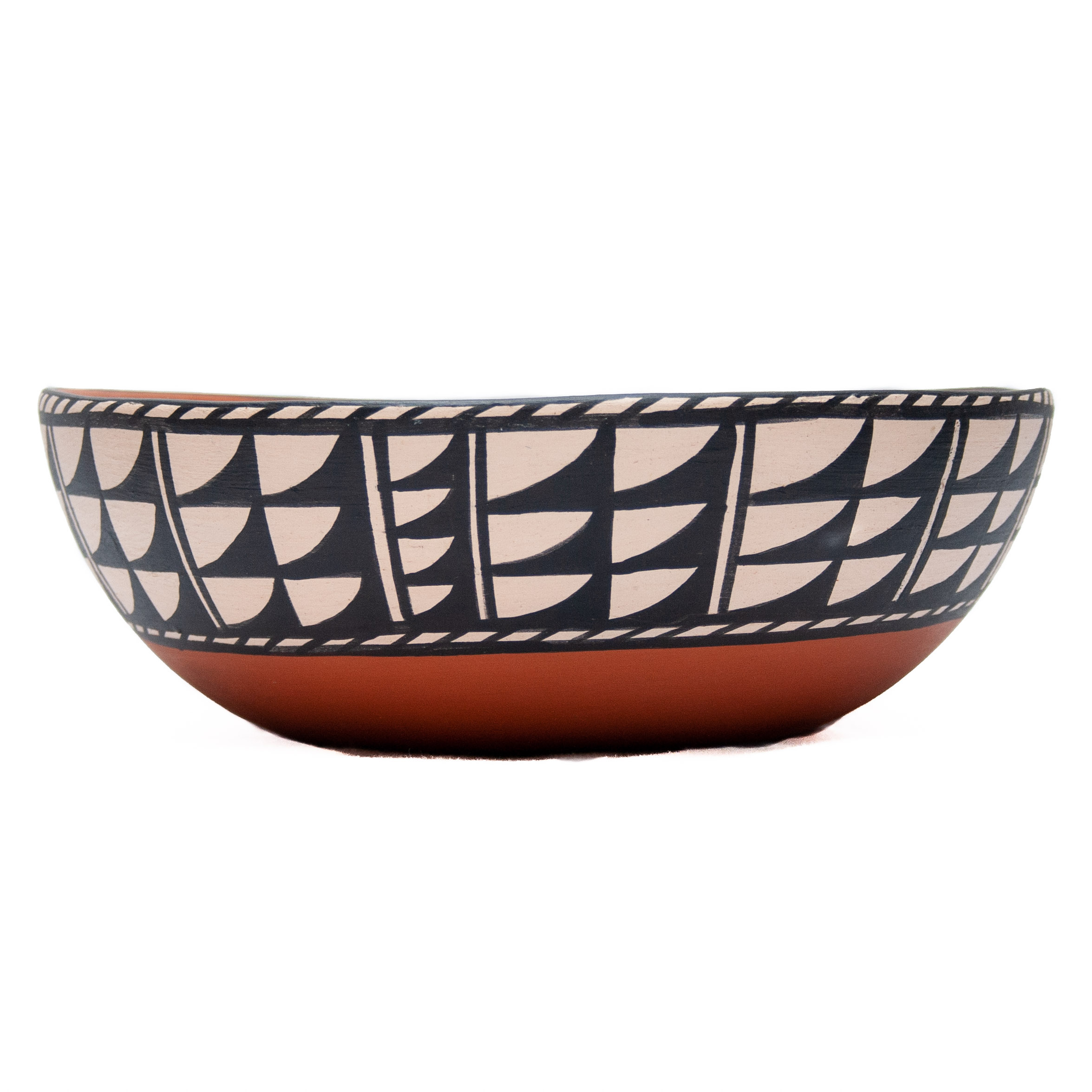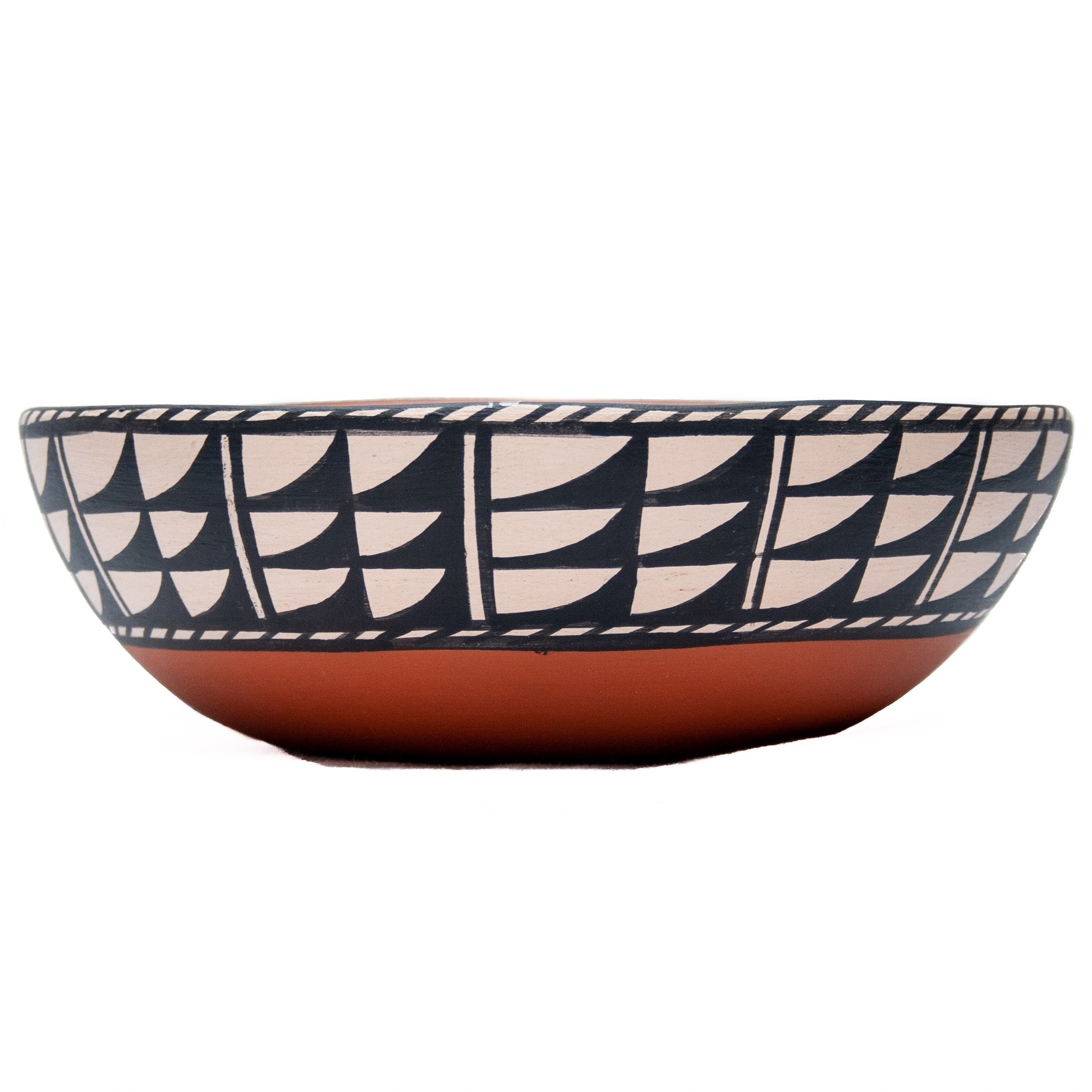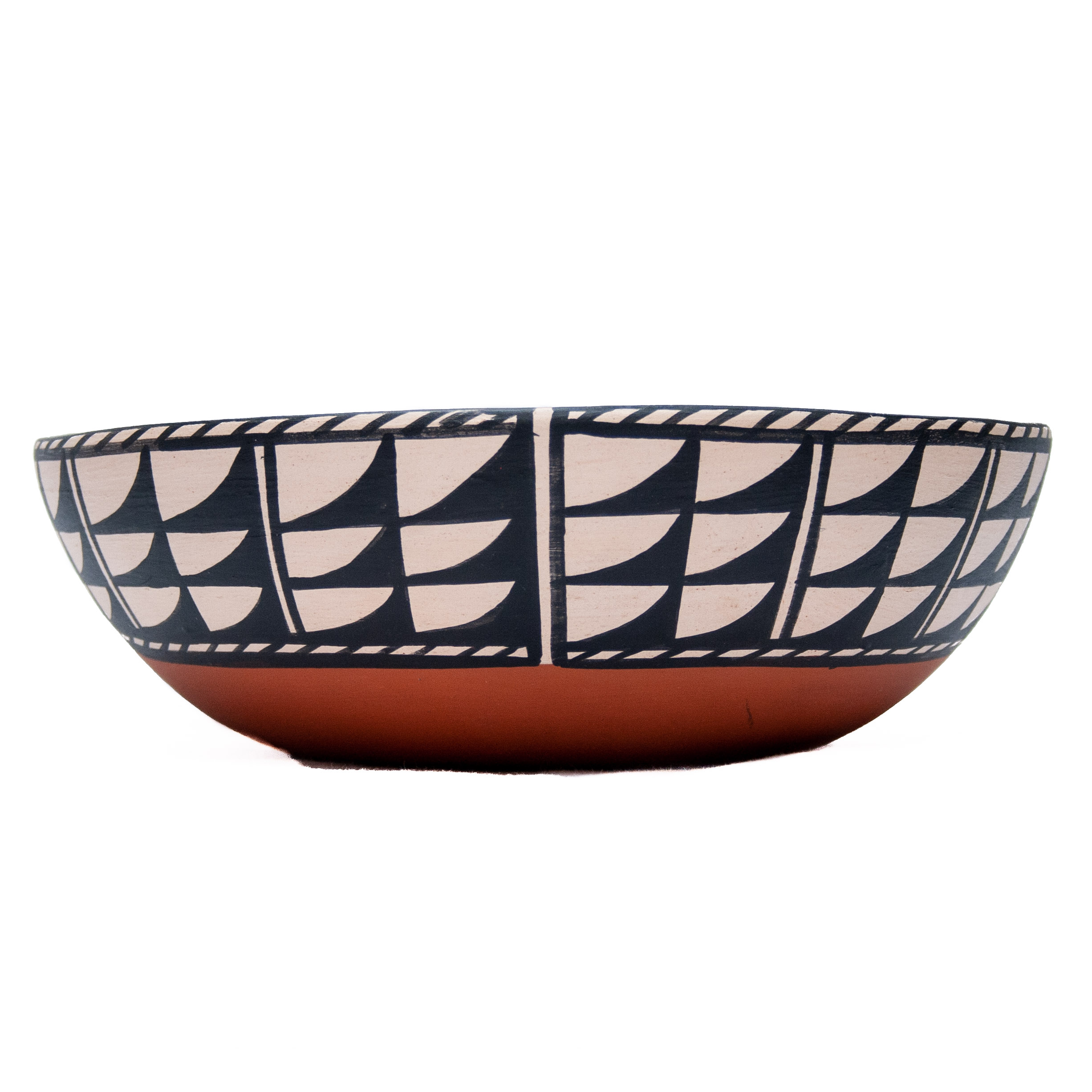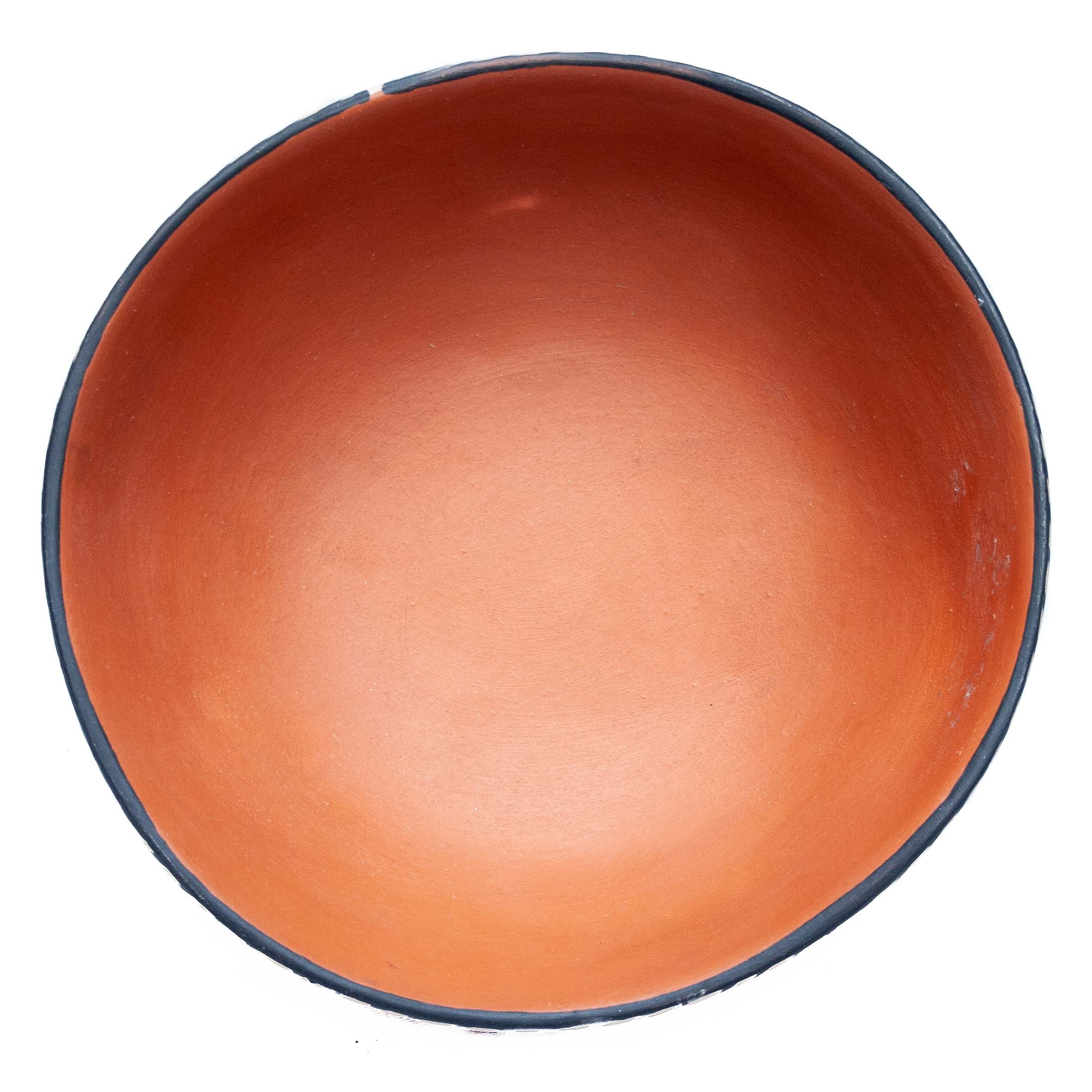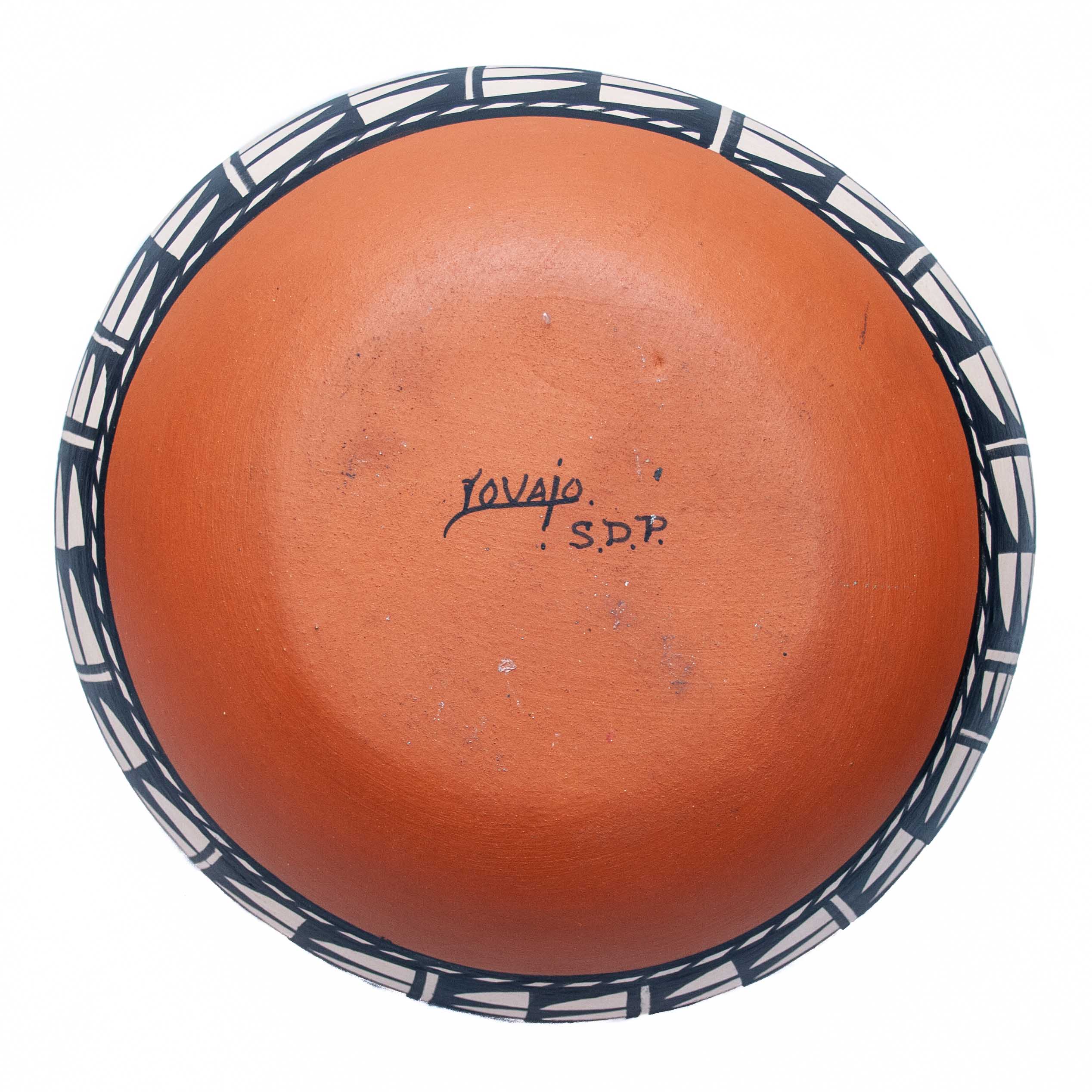Toute notre poterie amérindienne est de source éthique et Fair Trade. Wilde Ones s’efforce de sélectionner à la main les plus belles pièces des meilleurs artistes amérindiens. À cet effet, nous voyageons en Arizona, au Nouveau-Mexique, en Californie et au Mexique chaque année depuis 1987. Nous prenons plaisir à non seulement satisfaire nos clients avec des produits de qualité supérieure, mais aussi à entretenir de solides relations saines et durables avec nos artisans et artisanes amérindiens aux talents multiples.
Poterie Amérindienne Saladier Zuni
£189.00
Glaise
Pigments naturels
Longueur: 80 mm
Largeur: 245 mm
Une création Zuni signée Pedro Lovato
Kewa Polychrome seems to have developed in the 1880’s and has been a mainstay of pottery design in the pueblo ever since. The style features black geometric designs in vertical panels painted on a cream-colored slip body with a solid red slip underneath.
« The Aguilar family started a « reverse painting » trend around 1910 by covering the cream-colored slip almost entirely with black and red. Today’s polychrome designs feature animals, leaves and flowers. It is strictly forbidden to paint human forms or sacred symbols on any pottery that isn’t ceremonial pottery. There were very few potters in the pueblo in the early 1900’s as most people were making jewelry. Santana Melchor, taught the art of pottery making by her mother, began making pieces in the 1920’s and by 1945 she was the most prominent potter at Santo Domingo. She also taught the art to her children and grandchildren. However, it seems the recent revival in Santo Domingo pottery began in the 1970’s when Robert Tenorio, originally of a jewelry-making lineage, learned pottery making from his aunt Andrea Ortiz. Over the years since he has revived many of the traditional Kewa styles and passed his art on to more of his family. He has also inspired others within the pueblo to learn to make Santo Domingo pottery again. » Click here for the full article courtesy of Eyes on the Pot.
En stock

